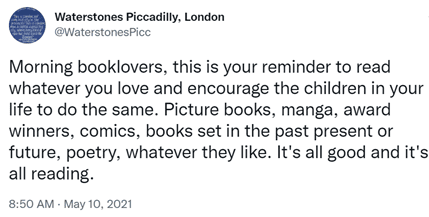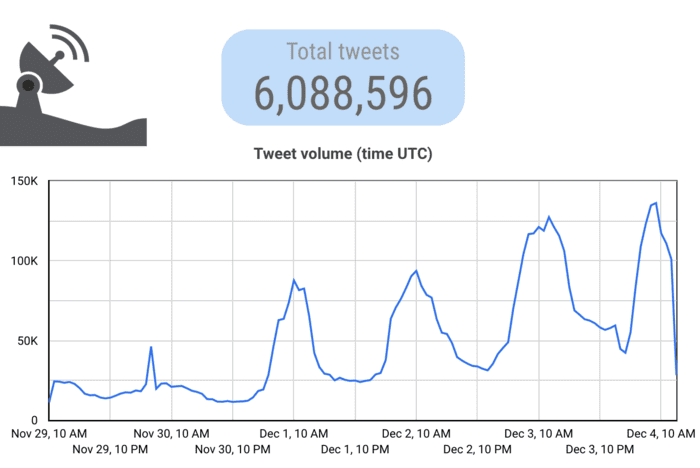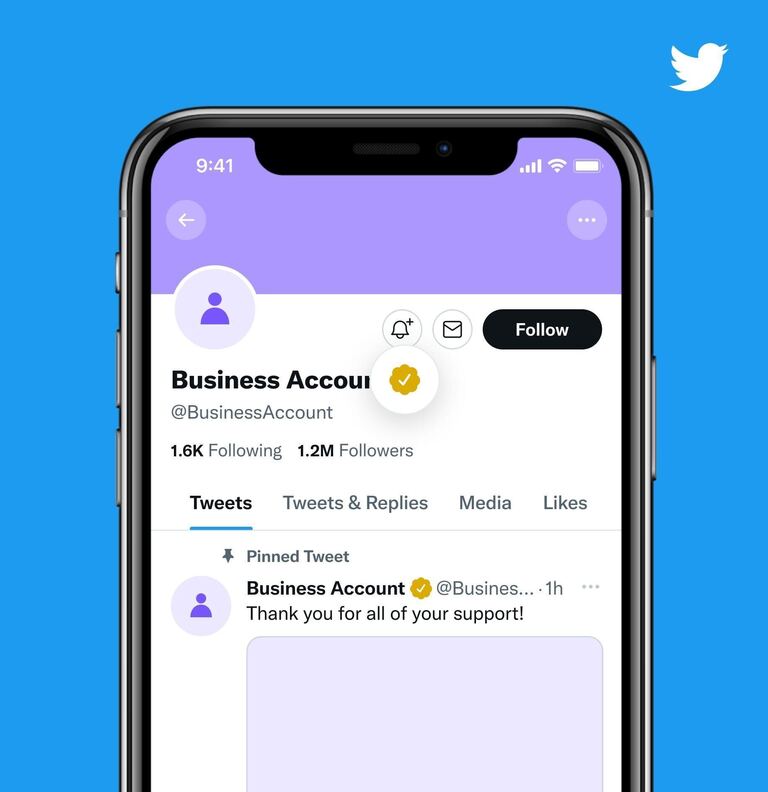What To Tweet: 24 Ideas For Inspiration via @sejournal, @TaylorDanRW
When building your brand’s reputation, you must consider how you want to present your business online.
What you say and how you say it can impact how your brand is perceived – so it’s important to post what reflects your unique values.
Twitter is an effective marketing tool for building exposure for your business and tailoring your brand reputation, and it can even increase your Google search visibility when used correctly.
You can promote your products, share content, and hop on relevant trends to remain relatable among your followers.
There are various ways to advertise on Twitter, but your Tweets are what build your branding.
However, with 280 characters per Tweet, it can be tricky to say everything you want in a single post.
Here are some tips for crafting the perfect Tweets to effectively build your unique branding and promote your business on Twitter.
Nail Your First Tweet
Whether you’re a new business, or an existing enterprise joining Twitter for the first time, your first Tweet will set the tone for your online personality.
-
 Image from Twitter, March 2009
Image from Twitter, March 2009


First and foremost, keep it short. Your Twitter handle will tell users who you are, and your bio should characterize your brand effectively enough that you don’t have to repeat it in your post.
Focus on introducing yourself in a simple yet engaging way.
Established enterprises can get away with a simple greeting and an invitation for followers to communicate, like the first Tweet from Pepsi in 2009.
It’s already a widely recognized brand, so it doesn’t need a formal introduction.
Small and new businesses should introduce themselves in a succinct way.
Consider sharing an image or short video. It could be your logo, your office headquarters, or your products. Visuals are eye-catching and, if done well, can depict what you want to say without having to say it.
Examples Of First Tweets
- @BBCBreaking got straight to the point; it’s their first Tweet in 2007 by releasing a breaking headline.
- @washingtonpost kicked off its feed with a gentle greeting in 2008.
- @redlobster kept things familiar with its first Tweet in 2011 by asking its new followers what first came to mind when they thought of the brand.
- @Oreo has a reputation for maintaining communication with its followers, which is exactly what the company did when it asked who loved its cookies back in 2010.
- @Arbys also opted for familiarity when it pretended it was speaking into a microphone with its initial Tweet in 2010, inviting followers to start a conversation.
- @kfc needed no introduction, so it got stuck on Twitter with a comedic 2008 post.
- @pizzahut joined Twitter in 2009 and used its first Tweet as an opportunity to promote one of its most popular pizzas.
What To Tweet In The Morning
There are certain times during the day when your Tweets are likely to be seen by more people.
Early mornings, usually between 8 a.m. and 9 a.m., are some of the best times to post, as this is when your followers are waking up and scrolling.






What you tweet in the morning depends on your brand and unique offering.
You could create a poll asking followers how they’re spending their day, choosing options your followers can relate to in some way.
If you’re releasing a new product or any promotional content that day, the mornings are a prime time to tweet about it.
Examples Of Morning Tweets
- @WaterstonesPicc started its day with this Tweet in 2021 by reminding its followers to read the books they love.
- There was no chance @tacobell would miss the opportunity to remind its followers it was National Taco Day with a tasty wake-up call in 2018.
- @MicrosoftUK started a working day back in 2020 by promoting its nine-person video call feature.
- @newlook was straight on to Twitter at 7 am this day in December 2022 by sharing a link to its Christmas gift guide for women.
- Sticking true to its true name, Rasmussen Reports, @Rasmussen_Poll started the day with this Tweet by releasing an updated report on a recent lawsuit.
Relatable Content To Tweet
When tweeting to be relatable, stick to topics you have the authority to discuss.
Let’s say you own a skincare brand – it would be appropriate to share popular skincare ingredients, tips on clearing acne, or techniques for facial massages.
However, it wouldn’t be on-brand to post about travel or vehicle maintenance.
Relevant Tweets would be reminding your followers to apply their SPF in the morning or to enjoy a moisturizing face mask over the weekend, using trending hashtags where possible.
Of course, relatability is also about the language you use.
Twitter is a good place to soften your typical professional jargon and communicate with followers as you would a person in your life.
You might not use hashtags, emojis, or colloquial phrases on your main site, but they can do wonders for relatability when used in Tweets.
Examples Of Relatable Tweets
- @vieve is a makeup brand that knows its trends. It played on the common joke of something being old fashioned with this Tweet, winking at its Ninetease makeup collection with the language followers can relate to.
- @Airbnb knew many of its followers were excited about the upcoming Hocus Pocus 2 (2022) movie release and played it to the brand’s advantage when it tweeted a link to a replica property of the Sanderson cottage.
- @animalcrossing (under the management of the character Isabelle) maintained the gaming timeline of its players in the northern hemisphere by sharing tricks for playing the game this time of year.
- @NandosUK recently used the Christmas period to its advantage by using a common phrase to encourage followers to make an order.
- @Deliveroo knows how much the U.K. loves a Christmas dinner, so it shared a picture asking its followers what was missing from the plate to get everyone talking.
Funny Tweets To Boost Followers & Engagement
Your followers want to connect to your brand on a human level, and one of the best ways to do so is by showing your funny side.
Not only do comedic Tweets further your relatability, but they can also be a fantastic marketing technique.
Look at what the average Twitter user is posting and see what Tweets get the most engagement. Is it short one-liners, or is it memes?
What your followers find funny enhances your relatability, so keep on top of trends to see where you can use them to your advantage.
The red flag trend took off in 2021, and many brands like Oreo hopped on the trend to promote their products.
Trends such as this allow businesses to promote their brand and offerings in a way to which followers can relate.
Examples Of Funny Tweets
- @netflix is fully aware of the “Netflix and chill” suggestion, so used it alongside a chuckle-worthy GIF from a movie that can be streamed on its platform.
- @PopTartsUS shared an image of its SPLITZ product garnishing a mocktail, taking the opportunity to make fun of its followers lightly.
- @MontereyAQ introduced its followers to one of its long-term residents with some familiar comedic descriptions.
- @peta often handles hard-hitting topics but occasionally likes to lighten things up, like when it gave friendly alternatives to common phrases that reference animals.
- @buglesofficial made a joke about how it would rather give up its apple a day in favor of a packet of its crisps. The Tweet, which leveraged the popular “Hide The Pain Harold” meme, went down well with followers.
Viral Tweets
You can’t guarantee what will or won’t go viral, as it’s often a shot in the dark that typically depends on timing.
It might happen for a unique new product, a life hack, or making fun of your own situation – it’s almost impossible to predict.
You might remember the big caterpillar cake battle of 2021. Marks & Spencer took legal action against Aldi in April of that year, demanding Aldi remove a specific item from its shelves.
The item in question was Cuthbert the Caterpillar Cake, which resembles the M&S Colin variety.






Some brands might shy away from publicly discussing legal matters — not Aldi.
The German discount supermarket saw the funny side of the case and played it to its advantage on Twitter.
Aldi’s page became a string of mocking memes, referring to its rivals as “Marks & Snitches” while coining the #FreeCuthbert hashtag. It even went as far as putting Cuthbert behind bars, and insinuating M&S was holding the cake hostage.
Twitter users revealed how well the Aldi social team used humor and relatable memes to handle the situation in a comical and relatable way. The interaction went viral, with thousands of users resharing variations of the Cuthbert-related memes.
Fast forward to June 2022, and Cuthbert returned to Aldi’s shelves after a 15-month legal battle with the hashtag #cuthback hitting high on the trending list.
After making waves on Twitter the previous year, there was an increased interest in trialing the cake that had so many people talking.
Shoppers rushed to Aldi to purchase the caterpillar, increasing sales above those before the legal debate.
The #FreeCuthbert campaign, which won the 2021 Marketing Week Masters award for Social Media, shows how turning a tricky situation into something entertaining can be the golden ticket to going viral.
Examples Of Viral Tweets
- @weetabix shocked its followers with a bizarre partnership with Heinz beans, which had many people talking.
- @Wendys is known for poking fun at other brands and went viral with this simple Tweet that poked fun at Facebook for changing its name to Meta.
The Ice Bucket Challenge became a global phenomenon when Chris Kennedy (@ckgolfsrq) started the challenge for ALS Foundation by sharing the first video of pouring ice water over yourself.
In essence, the trick to successful tweeting is connecting with your followers on a human level while depicting your brand the way you want.
You might not always go viral, but you’ll build an engaging online presence that will bring your followers back for more.
More resources:
Featured Image: VectorMine/Shutterstock










